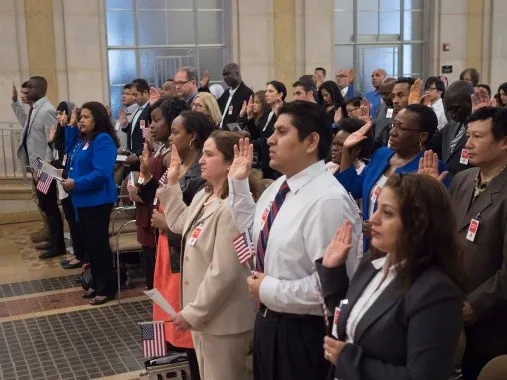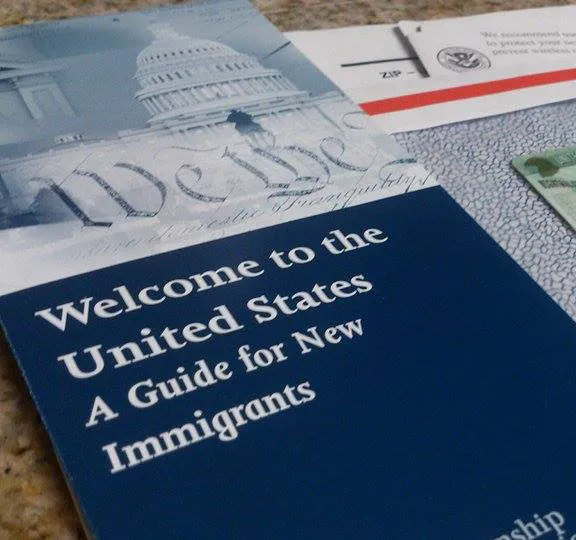1. Adjudicate more than 26,000 requests for various immigration benefits, process 200 refugee applications around the world and grant asylum to 45 individuals already in the United States, and screen 146 people for protection based on a credible fear of persecution if they return to their home country. Immigration services officers, who make up about 44 percent of our workforce, verify the information and supporting documents in each request to ensure they grant the right benefits to the right person.
2. Answer over 50,000 phone calls to their toll-free customer service line and serve 2,200 customers at information appointments in 86 domestic field offices. Emma, their interactive virtual assistant on uscis.gov, provides immediate answers to general questions, which has reduced the number of calls to our National Customer Service Center.

Photo center, citizenship candidates participate in a naturalization ceremony. (Photo provided by USCIS)
3. Receive 335,000 visitor sessions on USCIS.gov. Their most-visited pages are the case status online page and the forms page.
4. Fingerprint and photograph 13,000 people at 137 Application Support Centers. Biometrics allow USCIS to verify a customer’s identity and run required background and security checks. This is a crucial step in the adjudication process; they may deny an application, petition, or request if the customer does not appear for their biometrics appointment.

Photo center, image of a USCIS welcome guide given to newly naturalized citizens. (Photo provided by USCIS)
5. Ensure the employment eligibility of more than 80,000 new hires in the United States. By law, companies are only allowed to hire individuals who may legally work in the U.S. This includes U.S. citizens and foreign-born citizens who have the necessary documentation.
6. Welcome nearly 2,000 new citizens at naturalization ceremonies. Typically about 36 of these new citizens are members of the U.S. armed forces. USCIS launched a Naturalization at Basic Training initiative in August 2009 to streamline the citizenship process for our service members. Those who participate in this initiative will provide biometrics, complete their naturalization interview, and take the Oath of Allegiance on their military installation. They also provide support to service members who naturalize later in their military career.
